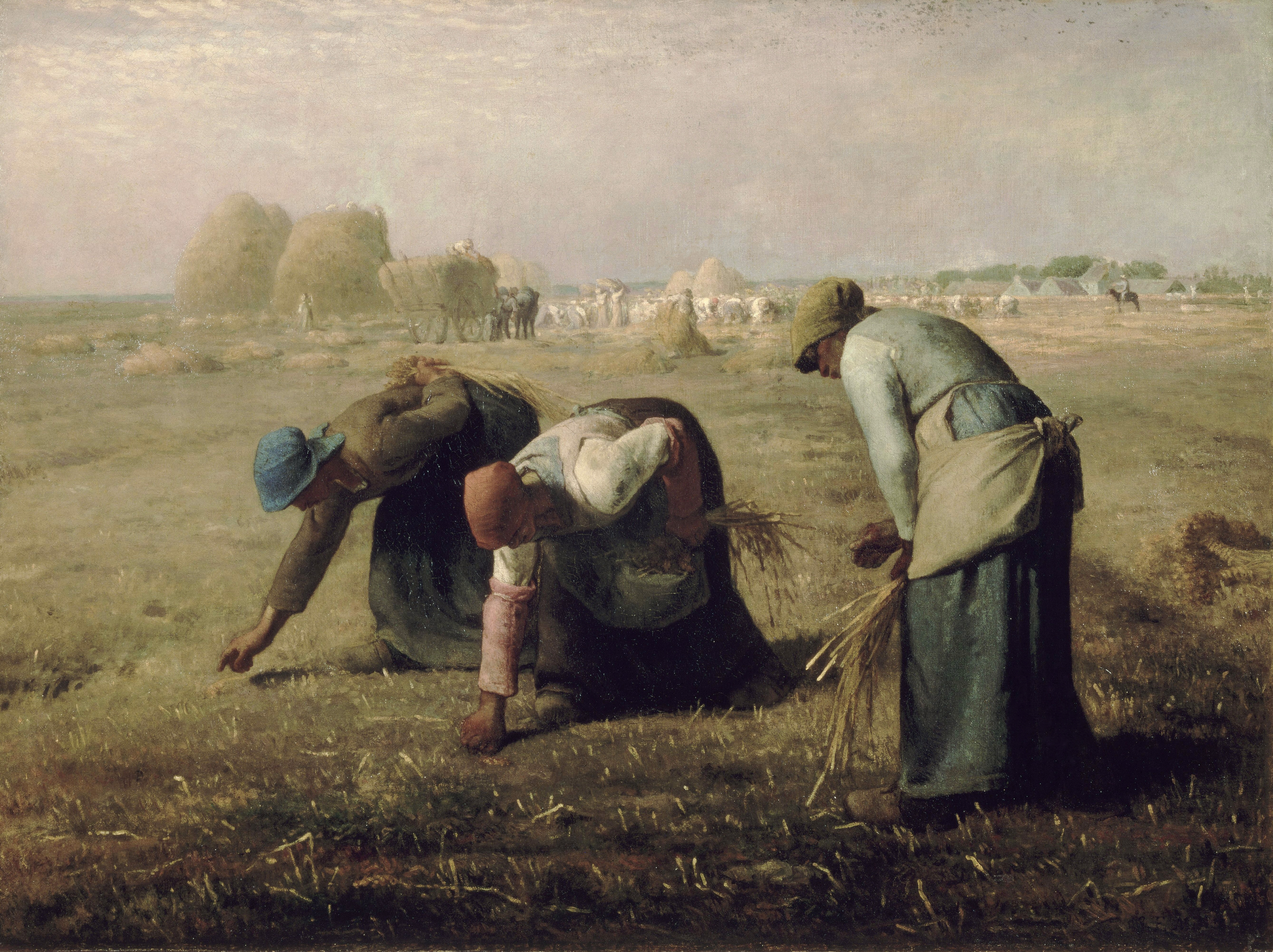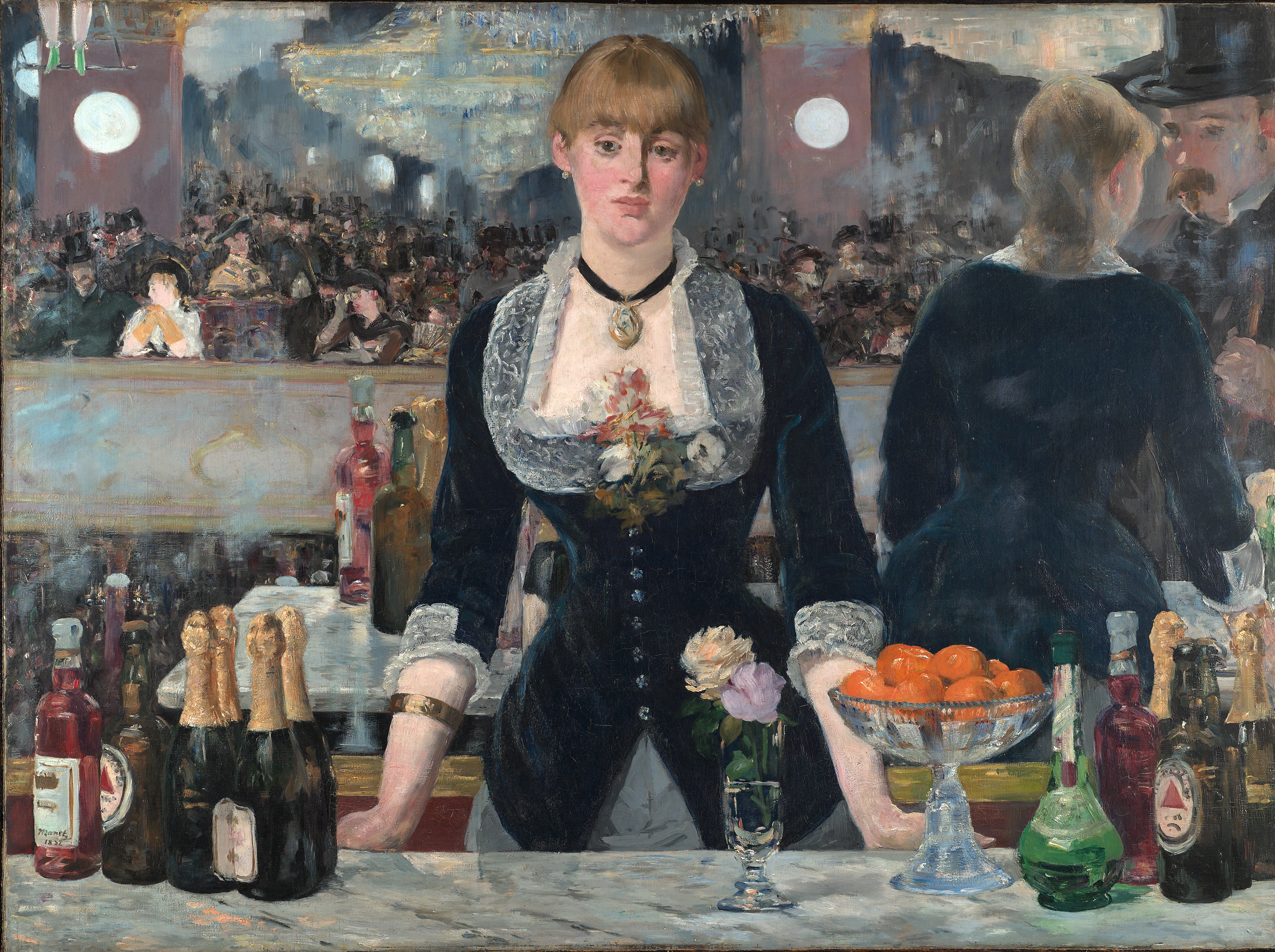Introduction: The Radical Rejection of Idealism
 |
| The Gleaners Jean-François Millet, Public domain, via Wikimedia Commons |
Emerging in France around the 1840s as a forceful counter-movement to the dominant Romanticism and Neoclassicism, Realism was more than a stylistic shift; it was a philosophical revolt. It championed a simple, radical idea: that art should represent contemporary life and the world as it is, not as it should be according to academic ideals, historical fantasies, or emotional extravagance.
Realist painters turned their backs on mythological heroes, biblical dramatics, and romanticized landscapes. Instead, they focused their unflinching gaze on the everyday lives of ordinary people—peasants, laborers, the working class—and the often unpretty realities of the modern world.
This essay will journey through the origins of this groundbreaking movement, explore its defining characteristics, and immerse ourselves in the truthful, often gritty, worlds of its seven most pivotal artists: Gustave Courbet, Jean-François Millet, Honoré Daumier, Rosa Bonheur, Édouard Manet, Thomas Eakins, and Ilya Repin. For each, we will delve into the artistic details of two of their seminal works, understanding how together, they dismantled centuries of tradition to forge a new, authentic path for modern art.
The Crucible of Change: Historical and Intellectual Context
 |
| The Third-Class Carriage The Metropolitan Museum of Art, New York Kgbo, CC BY-SA 4.0, via Wikimedia Commons |
The rise of Realism was not an isolated artistic trend but a product of profound social, political, and intellectual upheaval in mid-19th century Europe.
The 1848 Revolutions: Waves of revolution swept across Europe, fueled by growing discontent with monarchies and the rising power of the working and middle classes. This climate of social awareness and demand for change created an audience for art that addressed contemporary issues and the lives of the common people.
The Industrial Revolution: Rapid industrialization transformed societies, creating immense wealth for some but also grueling working conditions, urban poverty, and a growing disconnect from the rural past. Artists began to document these changes, focusing on both the dignity and the hardship of labor.
The Rise of Positivism and Secularism: The philosophical doctrine of Positivism, championed by Auguste Comte, emphasized the empirical and scientific study of society. This encouraged a move away from religious and metaphysical explanations of the world toward observation and factual representation. Similarly, increasing secularization meant art was no longer primarily a tool for religious devotion.
Photography: Invented in 1839, photography presented both a challenge and an inspiration to painters. It proved that literal representation could be achieved mechanically, pushing painters to consider what unique vision their medium could offer. More importantly, it provided a new model for capturing unposed, instantaneous moments of modern life.
This new climate fostered an art that was democratic, skeptical of authority, and committed to depicting the unembellished truth of the present moment.
Defining the Truth: Key Characteristics of Realism
The Realist style is defined by its commitment to contemporary subject matter and a rejection of artificiality. Its core tenets include:
Rejection of Historical and Mythological Subjects: Realists argued that the art of their own time should depict the people and events of their own time. The heroism of ancient Greece or the drama of the Bible was replaced by the heroism of the laborer and the drama of the harvest.
Focus on the Working Class: Peasants, factory workers, and common villagers became worthy subjects for grand painting, often depicted on a scale previously reserved for history painting.
Depiction of Modern Life (La Vie Moderne): Artists turned to the world around them: rural labor, social inequalities, urban entertainment, and domestic scenes. Nothing was too mundane or too ugly to be considered art.
Social Commentary: Many Realist works carried an implicit or explicit critical message about the conditions of the poor, the injustices of the class system, or the hypocrisy of the bourgeoisie.
Emphasis on Observation and "Truth": Artists sought to paint what they saw, not what they imagined or what a academy taught them to see. This often involved painting en plein air (outdoors) for landscapes and studying their subjects from life.
Formal Techniques: Rejecting the smooth, idealized surfaces of Neoclassicism and the dramatic brushwork of Romanticism, Realists often employed a palette of earthy, authentic colors and a deliberate, sometimes coarse, brushwork that emphasized the materiality of paint and the roughness of their subjects.
The Architects of Truth: Seven Pioneers and Their Canvases
1. Gustave Courbet (1819-1877): The Manifesto Maker
Gustave Courbet was the arrogant, brilliant, and fiercely independent artist who became the figurehead and chief theorist of the Realist movement. His audacious pronouncement, "I cannot paint an angel because I have never seen one," encapsulates the Realist ethos. He deliberately provoked the Parisian art establishment with his massive, rough-hewn canvases that elevated the mundane to the level of history painting.
 |
| The Stone Breakers Gustave Courbet, Public domain, via Wikimedia Commons |
 |
| A Burial at Ornans. Gustave Courbet, Public domain, via Wikimedia Commons |
2. Jean-François Millet (1814-1875): The Poet of the Peasantry
While Courbet was a provocateur, Millet was a poet. A key figure of the Barbizon School, he shared the Realist commitment to depicting rural labor but infused his scenes with a sense of solemn dignity, timelessness, and often a deep, quiet religiosity. His peasants are not political statements but universal symbols of humanity's connection to the land and the cycle of life.
| The Gleaners. 1857. Oil on canvas Jean-François Millet, CC BY 3.0, via Wikimedia Commons |
 |
| The Ángelus Jean-François Millet, Public domain, via Wikimedia Commons |
3. Honoré Daumier (1808-1879): The Social Satirist
Though best known for his prolific and biting lithographic caricatures, Daumier was also a profoundly influential painter and sculptor. His work was relentlessly focused on the social and political landscape of Paris, critiquing the hypocrisy of the bourgeoisie, the corruption of the legal system, and the struggles of the urban poor with unmatched wit and compassion.
 |
| The Third-Class Carriage The Metropolitan Museum of Art, New York Kgbo, CC BY-SA 4.0, via Wikimedia Commons |
.jpg) |
| The Print Collector (c. 1860) {{PD-US}} Honoré Daumier, Public domain, via Wikimedia Commons |
4. Rosa Bonheur (1822-1899): The Realist of the Animalier Tradition
Rosa Bonheur was one of the most famous and successful artists of the 19th century, a remarkable feat for a woman in a male-dominated field. A specialist in animal painting (animalier), she applied a rigorous Realist methodology to her work, based on direct, scientific observation. Her detailed, unsentimental depictions of animals were celebrated for their accuracy and power.
.jpg) |
| Nivernais plowing - known as Le Sombrage (detail), 1849 Ibex73, CC BY-SA 4.0, via Wikimedia Commons |
 |
| The Horse Fair Rosa Bonheur, CC0, via Wikimedia Commons |
5. Édouard Manet (1832-1883): The Bridge to Modernity
Though often considered a precursor to Impressionism, Édouard Manet's work is fundamentally rooted in a Realist desire to paint modern life. However, his realism was not of subject matter alone but of vision. He rejected the illusionistic depth and modeling of the Old Masters, instead drawing attention to the flatness of the canvas and the act of painting itself, thereby creating a new kind of truth for the modern age.
 |
| Luncheon in the Studio Édouard Manet, Public domain, via Wikimedia Commons |
The painting centers on a young man, Léon Koëlla Leenhoff, standing amidst the remnants of a meal. His contemplative gaze and slightly detached posture create a sense of modern alienation.
The composition is a study in contrasts: the detailed, luxurious still life of oysters, citrus, and polished armor in the foreground clashes with the hazy, quickly brushed background. Manet rejects traditional depth, flattening the space and drawing attention to the act of painting itself.
This work is not a straightforward genre scene but a sophisticated arrangement of textures and tones, reflecting Manet’s enduring fascination with capturing the fleeting, ambiguous moments of contemporary life.
 |
| A Bar at the Folies-Bergère Édouard Manet, Public domain, via Wikimedia Commons |
Manet’s final masterpiece is a complex and enigmatic portrait of modern life.
A weary barmaid stands behind her counter, her detached expression contrasting with the glittering nightclub atmosphere reflected in the mirror behind her.
This reflection is famously puzzling, spatially ambiguous, and creates a sense of profound dislocation.
The painting brilliantly dissects the alienation of urban entertainment, exploring the gap between a worker's public performance and her private reality. A complex and enigmatic capstone to his career, Manet’s last major work is a profound study of modern alienation. It depicts a barmaid at a Parisian nightclub, her weary detachment starkly opposed to the lively crowd reflected in the mirror.
The composition is intentionally puzzling; her misplaced reflection creates a sense of psychological dislocation. This is more than a genre scene—it is a critical examination of the divide between public role and inner self in the new metropolitan experience.
Manet’s final masterpiece is a famously enigmatic puzzle. A barmaid stands detached behind a marble counter, while the vast mirror behind her reflects a bustling Parisian nightclub—and a mysteriously shifted reflection of herself. This spatial ambiguity creates an unsettling sense of dislocation, forcing us to question her role: is she an object of desire or a isolated worker? The painting masterfully captures the tension between the glittering performance of public life and the private alienation lurking beneath.
6. Thomas Eakins (1844-1916): The American Empirical Realist
In America, Thomas Eakins became the foremost proponent of Realism. A passionate believer in the scientific study of the human form, he applied a meticulous, almost clinical eye to his depictions of American life, from surgical theaters to sporting events. His commitment to anatomical accuracy and psychological honesty was unwavering, often leading to controversy.
| Portrait of Dr. Samuel D. Gross (The Gross Clinic) Thomas Eakins, CC0, via Wikimedia Commons |
7. Ilya Repin (1844-1930): The Chronicler of the Russian Soul
As the leading Russian painter of the 19th century, Ilya Repin used the Realist style to create powerful social and historical narratives that captured the complex essence of the Russian people. His work is characterized by its psychological depth, its rejection of idealization, and its profound empathy for the struggles of all classes of Russian society.
_-_Volga_Boatmen_(1870-1873).jpg) |
| Barge Haulers on the Volga (c. 1870–1873) Ilya Repin, Public domain, via Wikimedia Commons |
Legacy: The Unending Pursuit of the Real
The Realist movement's insistence on truthfulness and its focus on contemporary life irrevocably changed the course of art. It paved the way for the optical experiments of Impressionism, the social anger of Expressionism, and the conceptual challenges of Modernism. More importantly, it established a principle that continues to resonate: that art has a responsibility to engage with the real world, to question power, and to give voice to the overlooked.
From the gritty social documentaries of the Ashcan School to the haunting urban scenes of Edward Hopper and the photorealistic paintings of the late 20th century, the spirit of Realism endures. It is the enduring belief that there is profound drama, beauty, and meaning to be found not in escape, but in a clear-eyed, compassionate, and unflinching look at the world as it truly is. The Realists taught us that the greatest subject for art is, and has always been, the human condition itself, in all its unvarnished truth.